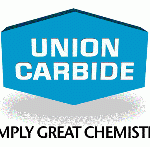The Pollution Prevention Act (PPA) of 1990 (42 U.S.C. §13101 et seq. (1990)) was a paradigm shift in the control of pollution (and hazardous waste). While previous regulations emphasized the end of the pipeline, the PPA moved the control of pollution upstream in the manufacturing process to prevent the waste from being generated in the first place. Closely related to the PPA is the NJ Pollution Prevention Act. Passed in 1991, the NJ PPA implements the concept of reduction in waste production upstream by requiring affected companies to develop and submit a 5-year pollution reduction strategy and file a Release and Pollution Prevention Report (RPPR). The NJ Release and Pollution Prevention Report collects data for New Jersey Right to Know Act ( NJRTK).
What does the Federal PPA require?
Facilities must account for their use of toxic chemicals and, where feasible, reduce their use. Toxic pollution that cannot be reduced should be recycled, and pollution that cannot be recycled should be disposed of in an environmentally safe manner.
EHS professionals must have a firm understanding of the processes that use toxic chemicals in order to reduce their use. Documenting these activities is an important step in PPA compliance and must include an accounting for the final disposal of toxic chemicals. Generally this is done using the EPAs Toxic Release Inventory (TRI) Reporting Form R.
For facilities in New Jersey, what else is required?
The New Jersey Pollution Prevention Act (NJ PPA), enacted in August of 1991, requires a Pollution Prevention (P2) Plan for facilities that meet specific requirements:
- A facility in New Jersey that files a Form R and a Release and Pollution Prevention Report (RPPR) under the New Jersey Worker and Community Right to Know Act for the same chemical(s) in two consecutive years. Note that in New Jersey any employer required to submit a TRI Form R is also required to submit the RPPR.
- The chemicals listed in the Form R and RPPR remain at or above the TRI activity thresholds.
The facility must prepare a five-year Pollution Prevention (P2) Plan and submit a P2 Plan Summary by July 1 once they become covered (the second year they submit an RPPR for the same chemical). This becomes the base year. For each of the following years that the facility remains at or above the TRI activity thresholds, the facility completes the P2-115 which compares pollution prevention progress for the reporting year to the base year.
The PPA Filing Process by an EHS Professional
When recently preparing PPA paperwork for a small biotech site, I had to collect a variety of information for preparing a New Jersey P2 Plan. A brief review of the steps is listed below. For detailed instructions, look at NJDEP Form DEP-113.
- Contacted the companys purchasing department to find out how much of each toxic chemical had been delivered to the facility.
- Contacted the companys hazardous waste management contractor to confirm that the amount purchased (Step 1) equaled the amount that was disposed.
- Compare the purchased to disposed amounts. The amounts did not match.
- Investigate the discrepancy. It turned out the waste management contractor was using a less accurate method for calculating the percentage of toxic chemical in our waste stream. Their laboratory data indicated that the company was disposing of more toxic chemical than purchased. Ultimately, the volume data from the companys purchasing department was used since no new toxic chemicals could be produced by the companys processes.
- Reviewed the companys air permit for an estimation of the toxic chemicals lost to the air.
- Calculated the chemical remaining as residue in the empty drums, which were also removed by our hazardous waste management contractor.
- Contacted the site Controller for the facility SIC code.
- Prepared a Five-Year Use Reduction Goal based on pollution prevention activities such as process improvements after a review of documentation of meetings where possible improvements were discussed with personnel who work with toxic chemicals as well as process engineering diagrams. (Sets site five year pollution prevention goals).
- Progress towards these goals needs to be reviewed yearly and documented on the site P2 Plan.
- Obtain signatures for plan from the highest ranking corporate official with direct operating responsibility and the highest ranking corporate official at the facility.
Note --- A P2 Plan Summary needs to be updated and submitted every five years for the chemicals referenced in the original P2 Plan submission.
This process needs to be repeated for each toxic chemical at each applicable facility in New Jersey with all of the information included as part of one P2 Plan regardless of the number of toxic chemicals reported. The facility does need to file one RPPR for each chemical. Does this seem like a lot of work? Consider this: In the twenty years since adoption, the PPA and NJ PPA have helped to substantially reduce the use and improper disposal of toxic chemicals by requiring industry to examine their work processes.
How about your facility?
As a facility, are you tracking your toxic chemicals and filing the appropriate PPA/NJ PPA documentation? Have you noticed that a mindful approach to the processes and paperwork have resulted in reduced usage and better, more healthful disposal of chemicals?
About Our Guest Blogger: Charles Peruffo is an EHS professional specializing in laboratory health and safety. Prior to his EHS career, Charles spent many years as chemist in the pharmaceutical industry with responsibilities ranging from laboratory safety to analyst training. He holds a Bachelor of Science in Biology from Montclair State University and is pursuing his Master of Science in Occupational Safety Health Engineering from New Jersey Institute of Technology.







